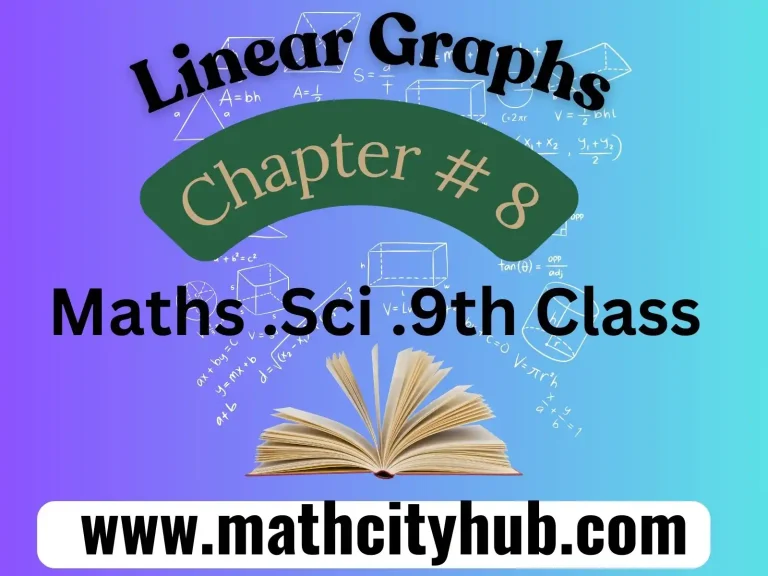Exercise.1.2:Matrices are rectangular arrays of numbers. They can be used to represent a wide variety of mathematical concepts, and they are used in many different fields, including mathematics, physics, engineering, and computer science.
There are many different types of matrices, each with its own unique properties. Some of the most common types of matrices include:
- Row matrix: A row matrix has only one row but any number of columns.
- A row matrix is a matrix with only one row. It can have any number of columns, but it will always have only one row. Row matrices are typically written in horizontal brackets, with the elements of the matrix separated by commas.
- For example, the following is a row matrix with three columns:
- [1, 2, 3]
- This matrix has only one row and three columns. The elements of the matrix are 1, 2, and 3.
- Here is another example of a row matrix:
- [4, 5, 6, 7]
- This matrix also has only one row, but it has four columns. The elements of the matrix are 4, 5, 6, and 7.
- Row matrices can be used to represent a variety of different things, such as vectors, systems of linear equations, and transformations. They are also used in many different algorithms for solving mathematical problems.
- For example, the following row matrix represents the vector (1, 2, 3):
- [1, 2, 3]
- This row matrix can be used to represent a variety of different things, such as the position of a point in three-dimensional space or the force acting on an object.
- Another example is the following row matrix:
- [1, 2, 3, 4]
- This row matrix can be used to represent the system of linear equations:
- x + 2y + 3z + 4w = 0
- where x, y, z, and w are variables.
- Row matrices are a powerful tool that can be used to solve a wide variety of problems in mathematics, physics, engineering, and other fields.
- Column matrix: A column matrix has only one column but any number of rows.
- Square matrix: A square matrix has the same number of rows and columns.
- Rectangular matrix: A rectangular matrix has a different number of rows and columns.
- Diagonal matrix: A diagonal matrix has all of its non-zero elements on the diagonal.
A diagonal matrix is a square matrix in which all of the elements except the principal diagonal elements are zero. The principal diagonal is the diagonal that runs from the top-left corner of the matrix to the bottom-right corner. Exercise.1.2:
Here is an example of a diagonal matrix:
[1, 0, 0]
[0, 2, 0]
[0, 0, 3]
This matrix is a diagonal matrix because all of the elements except the principal diagonal elements are zero. The principal diagonal elements are 1, 2, and 3.
Diagonal matrices are a special type of matrix that has many useful properties. For example, the determinant of a diagonal matrix is simply the product of the diagonal elements. Additionally, the inverse of a diagonal matrix is easy to compute.
Diagonal matrices are used in many different areas of mathematics, including linear algebra, numerical analysis, and statistics. They are also used in many different applications, such as image processing, machine learning, and control theory.

Here are some examples of how diagonal matrices are used in different fields:
- Mathematics: Diagonal matrices can be used to solve systems of linear equations, find the eigenvalues and eigenvectors of a matrix, and represent transformations of linear spaces.
- Numerical analysis: Diagonal matrices are used in many different numerical algorithms, such as the Gauss-Seidel method and the Jacobi method.
- Statistics: Diagonal matrices are used in many different statistical procedures, such as linear regression and principal component analysis.
- Image processing: Diagonal matrices are used in many different image processing operations, such as filtering and sharpening.
- Machine learning: Diagonal matrices are used in many different machine learning algorithms, such as support vector machines and logistic regression.
- Control theory: Diagonal matrices are used in many different control systems, such as feedback controllers and PID controllers.
Diagonal matrices are a powerful tool that can be used to solve a wide variety of problems in many different fields. By understanding the definition and properties of diagonal matrices, we can use them to our advantage to solve complex problems and make better decisions.
- Identity matrix: An identity matrix is a square matrix with 1s on the diagonal and 0s elsewhere.
- Zero matrix: A zero matrix is a square matrix with all zeros.
- Upper triangular matrix: An upper triangular matrix has all of its elements below the diagonal equal to zero.
- Lower triangular matrix: A lower triangular matrix has all of its elements above the diagonal equal to zero.
- Symmetric matrix: A symmetric matrix is a square matrix that is equal to its transpose.
- Skew-symmetric matrix: A skew-symmetric matrix is a square matrix that is equal to the negative of its transpose.
- Orthogonal matrix: An orthogonal matrix is a square matrix whose columns are all orthogonal to each other.
In addition to these common types of matrices, there are many other types of matrices that are used in specific fields. For example, Hermitian matrices are used in quantum mechanics, and stochastic matrices are used in probability theory.
Matrices can be used to represent a wide variety of mathematical concepts, such as systems of linear equations, transformations, and relationships between different quantities. They are also used in many different algorithms for solving mathematical problems.
Here are some examples of how matrices are used in different fields:
- Mathematics: Matrices can be used to solve systems of linear equations, find the eigenvalues and eigenvectors of a matrix, and represent transformations of linear spaces.
- Physics: Matrices can be used to represent forces, velocities, and other physical quantities. They can also be used to describe the behavior of systems such as electrical circuits and mechanical systems.
- Engineering: Matrices are used in many different engineering disciplines, such as civil engineering, electrical engineering, and mechanical engineering. They can be used to design structures, analyze electrical circuits, and control machines.
- Computer science: Matrices are used in many different computer science applications, such as graphics, image processing, and machine learning. They can be used to represent images, perform operations on vectors and matrices, and train machine learning models.
Matrices are a powerful tool that can be used to solve a wide variety of problems in many different fields. By understanding the different types of matrices and their properties, we can use them to our advantage to solve complex problems and make better decisions.
A scalar matrix is a square matrix in which all of the principal diagonal elements are equal to a constant value (known as the scalar), and all of the other elements are zero. In other words, a scalar matrix is a diagonal matrix in which all of the diagonal elements are the same.
Here is an example of a scalar matrix:
[2, 0, 0]
[0, 2, 0]
[0, 0, 2]
This matrix is a scalar matrix because all of the principal diagonal elements are equal to the scalar 2, and all of the other elements are zero.
Scalar matrices are a special type of diagonal matrix that has many useful properties. For example, the determinant of a scalar matrix is simply the power of the scalar to the order of the matrix. Additionally, the inverse of a scalar matrix is easy to compute.
Scalar matrices are used in many different areas of mathematics, including linear algebra, numerical analysis, and statistics. They are also used in many different applications, such as image processing, machine learning, and control theory.
Here are some examples of how scalar matrices are used in different fields:
- Mathematics: Scalar matrices can be used to solve systems of linear equations, find the eigenvalues and eigenvectors of a matrix, and represent transformations of linear spaces.
- Numerical analysis: Scalar matrices are used in many different numerical algorithms, such as the Gauss-Seidel method and the Jacobi method.
- Statistics: Scalar matrices are used in many different statistical procedures, such as linear regression and principal component analysis. Exercise.1.2:
- Image processing: Scalar matrices are used in many different image processing operations, such as filtering and sharpening.
- Machine learning: Scalar matrices are used in many different machine learning algorithms, such as support vector machines and logistic regression.
- Control theory: Scalar matrices are used in many different control systems, such as feedback controllers and PID controllers.

Scalar matrices are a powerful tool that can be used to solve a wide variety of problems in many different fields. By understanding the definition and properties of scalar matrices, we can use them to our advantage to solve complex problems and make better decisions.
An identity matrix is a square matrix in which all of the principal diagonal elements are equal to 1, and all of the other elements are zero. The principal diagonal is the diagonal that runs from the top-left corner of the matrix to the bottom-right corner.
Here is an example of an identity matrix:
[1, 0, 0]
[0, 1, 0]
[0, 0, 1]
This matrix is an identity matrix because all of the principal diagonal elements are equal to 1, and all of the other elements are zero.
Identity matrices are a special type of diagonal matrix that has many useful properties. For example, the determinant of an identity matrix is always equal to 1. Additionally, the inverse of an identity matrix is equal to itself.
Identity matrices are used in many different areas of mathematics, including linear algebra, numerical analysis, and statistics. They are also used in many different applications, such as image processing, machine learning, and control theory.

Here are some examples of how identity matrices are used in different fields:
- Mathematics: Identity matrices can be used to solve systems of linear equations, find the eigenvalues and eigenvectors of a matrix, and represent transformations of linear spaces.
- Numerical analysis: Identity matrices are used in many different numerical algorithms, such as the Gauss-Seidel method and the Jacobi method.
- Statistics: Identity matrices are used in many different statistical procedures, such as linear regression and principal component analysis.
- Image processing: Identity matrices are used in many different image processing operations, such as filtering and sharpening.
- Machine learning: Identity matrices are used in many different machine learning algorithms, such as support vector machines and logistic regression.
- Control theory: Identity matrices are used in many different control systems, such as feedback controllers and PID controllers.
Identity matrices are a powerful tool that can be used to solve a wide variety of problems in many different fields. By understanding the definition and properties of identity matrices, we can use them to our advantage to solve complex problems and make better decisions.
Questions & Answeres about Types Of Matrices
Q: What is a matrix?
A: A matrix is a rectangular array of numbers arranged in rows and columns. Matrices are used in many areas of mathematics, science, and engineering, to represent and solve systems of linear equations, to perform transformations of vectors, and to model physical systems.
Q: What are the different types of matrices?
There are many different types of matrices, each with its own unique properties and applications. Some of the most common types of matrices include:
- Row matrix: A matrix with only one row.
- Column matrix: A matrix with only one column.
- Square matrix: A matrix with the same number of rows and columns.
- Rectangular matrix: A matrix with a different number of rows and columns.
- Diagonal matrix: A matrix with all zeros except for the elements on the diagonal.
- Identity matrix: A square matrix with all ones on the diagonal and zeros everywhere else.
- Upper triangular matrix: A square matrix where all the elements below the diagonal are zero.
- Lower triangular matrix: A square matrix where all the elements above the diagonal are zero.
- Symmetric matrix: A square matrix where the elements above the diagonal are equal to the corresponding elements below the diagonal.
- Skew-symmetric matrix: A square matrix where the elements above the diagonal are equal to the negative of the corresponding elements below the diagonal.
- Orthogonal matrix: A square matrix where the transpose of the matrix is equal to its inverse.
Q: What are some examples of matrices?
Here are some examples of matrices:
- Row matrix: [1 2 3]
- Column matrix: [1 2 3]
- Square matrix: [[1 2 3], [4 5 6], [7 8 9]]
- Rectangular matrix: [[1 2 3], [4 5]]
- Diagonal matrix: [[1 0 0], [0 2 0], [0 0 3]]
- Identity matrix: [[1 0 0], [0 1 0], [0 0 1]]
- Upper triangular matrix: [[1 2 3], [0 4 5], [0 0 6]]
- Lower triangular matrix: [[1 0 0], [4 2 0], [7 5 3]]
- Symmetric matrix: [[1 2 3], [2 4 5], [3 5 6]]
- Skew-symmetric matrix: [[0 2 -3], [-2 0 4], [3 -4 0]]
- Orthogonal matrix: [[0 1 0], [-1 0 0], [0 0 1]]
Q: What are some applications of matrices?
Matrices are used in a wide variety of applications, including:
- Systems of linear equations: Matrices can be used to represent and solve systems of linear equations.
- Linear transformations: Matrices can be used to represent and perform linear transformations of vectors.
- Modeling physical systems: Matrices can be used to model physical systems, such as electrical circuits, mechanical systems, and optical systems.
- Computer graphics: Matrices are used in computer graphics to represent and transform objects.
- Machine learning: Matrices are used in machine learning to train and evaluate models.
Conclusion Exercise.1.2. Questions & Answeres about Types Of Matrices
Question 1: What are the different types of matrices?
Answer: There are many different types of matrices, each with its own unique properties and applications. Some of the most common types of matrices include:
- Row matrix: A matrix with only one row.
- Column matrix: A matrix with only one column.
- Square matrix: A matrix with the same number of rows and columns.
- Rectangular matrix: A matrix with a different number of rows and columns.
- Diagonal matrix: A matrix with all zeros except for the elements on the diagonal.
- Identity matrix: A square matrix with all ones on the diagonal and zeros everywhere else.
- Upper triangular matrix: A square matrix where all the elements below the diagonal are zero.
- Lower triangular matrix: A square matrix where all the elements above the diagonal are zero.
- Symmetric matrix: A square matrix where the elements above the diagonal are equal to the corresponding elements below the diagonal.
- Skew-symmetric matrix: A square matrix where the elements above the diagonal are equal to the negative of the corresponding elements below the diagonal.
- Orthogonal matrix: A square matrix where the transpose of the matrix is equal to its inverse.
Question 2: What are some examples of matrices?
Answer: Here are some examples of matrices:
- Row matrix: [1 2 3]
- Column matrix: [1 2 3]
- Square matrix: [[1 2 3], [4 5 6], [7 8 9]]
- Rectangular matrix: [[1 2 3], [4 5]]
- Diagonal matrix: [[1 0 0], [0 2 0], [0 0 3]]
- Identity matrix: [[1 0 0], [0 1 0], [0 0 1]]
- Upper triangular matrix: [[1 2 3], [0 4 5], [0 0 6]]
- Lower triangular matrix: [[1 0 0], [4 2 0], [7 5 3]]
- Symmetric matrix: [[1 2 3], [2 4 5], [3 5 6]]
- Skew-symmetric matrix: [[0 2 -3], [-2 0 4], [3 -4 0]]
- Orthogonal matrix: [[0 1 0], [-1 0 0], [0 0 1]]
Question 3: What are some applications of matrices?
Answer: Matrices are used in a wide variety of applications, including:
- Systems of linear equations: Matrices can be used to represent and solve systems of linear equations.
- Linear transformations: Matrices can be used to represent and perform linear transformations of vectors.
- Modeling physical systems: Matrices can be used to model physical systems, such as electrical circuits, mechanical systems, and optical systems.
- Computer graphics: Matrices are used in computer graphics to represent and transform objects.
- Machine learning: Matrices are used in machine learning to train and evaluate models.
Conclusion:
Matrices are a powerful tool for representing and manipulating data in a variety of applications. By understanding the different types of matrices and their properties, we can more effectively use them to solve problems and gain insights into complex data.
Suggested Read:
- Derivation Of a-b Whole Cube
- A Plus B Whole Square & Cube
- Explanation of A Square B With Example
- Explanation of Abstract Algebra Problems
- Easy Way to Learn A Cubed minus B Cubed
- Best 7th Grade Math Formulas for Children
- Derivation of A Square Minus B Square With Example
- Types of A Specific Formula for Solving a Problem Is Called
Full Book Math 9th Class
Exercise #1.2
Azam Bodla
M.Phil. Mathematics, Content Writer, SEO Expert
Web Developer, Online Tutor
Call or WhatsApp: +923059611600
Gmail:azambodlaa@gmail.com






